7 Strategies for Effective Technographic Segmentation in Market Research

7 Strategies for Effective Technographic Segmentation in Market Research
Overview
The article titled "7 Strategies for Effective Technographic Segmentation in Market Research" presents methods aimed at enhancing market research through technographic segmentation. It underscores the significance of integrating diverse data sources, including alternative information and ESG data, to enrich insights into consumer behavior and market trends. This integration not only leads to more effective marketing strategies but also ensures better alignment with buyer preferences. By leveraging these strategies, businesses can gain a competitive edge in understanding their target audience, ultimately driving more informed decision-making.
How can these insights be applied to your current market research efforts?
Introduction
In an age where data drives decision-making, the ability to segment markets effectively has never been more crucial. Technographic segmentation focuses on understanding consumer behavior through technology usage, providing businesses with a powerful lens to tailor their strategies. This article explores seven innovative strategies that leverage diverse datasets, AI-driven insights, and real-time analytics to enhance market research.
How can organizations navigate the complexities of these methods to truly connect with their target audiences and stay ahead of the competition? By examining these strategies, businesses can gain actionable insights that not only improve their market research but also foster stronger connections with consumers.
Initial Data Offering: Access Diverse Datasets for Enhanced Market Insights
The Initial Data Offering (IDO) serves as a centralized hub, providing access to a diverse range of datasets, including alternative information, fundamentals information, and ESG information. This variety allows companies to gain comprehensive insights into industry dynamics and buyer preferences, facilitating more efficient technographic segmentation.
SavvyIQ's API-first information infrastructure, bolstered by the AI-driven Recursive Data Engine, enhances these datasets by uncovering hidden consumer behaviors that traditional datasets may overlook. This capability significantly improves the overall quality of market insights. As a result, analysts are empowered to make informed decisions and drive strategic initiatives effectively.
How can these insights transform your approach to market analysis? By leveraging the IDO, organizations can not only enhance their understanding of the market landscape but also position themselves strategically to meet evolving consumer needs.
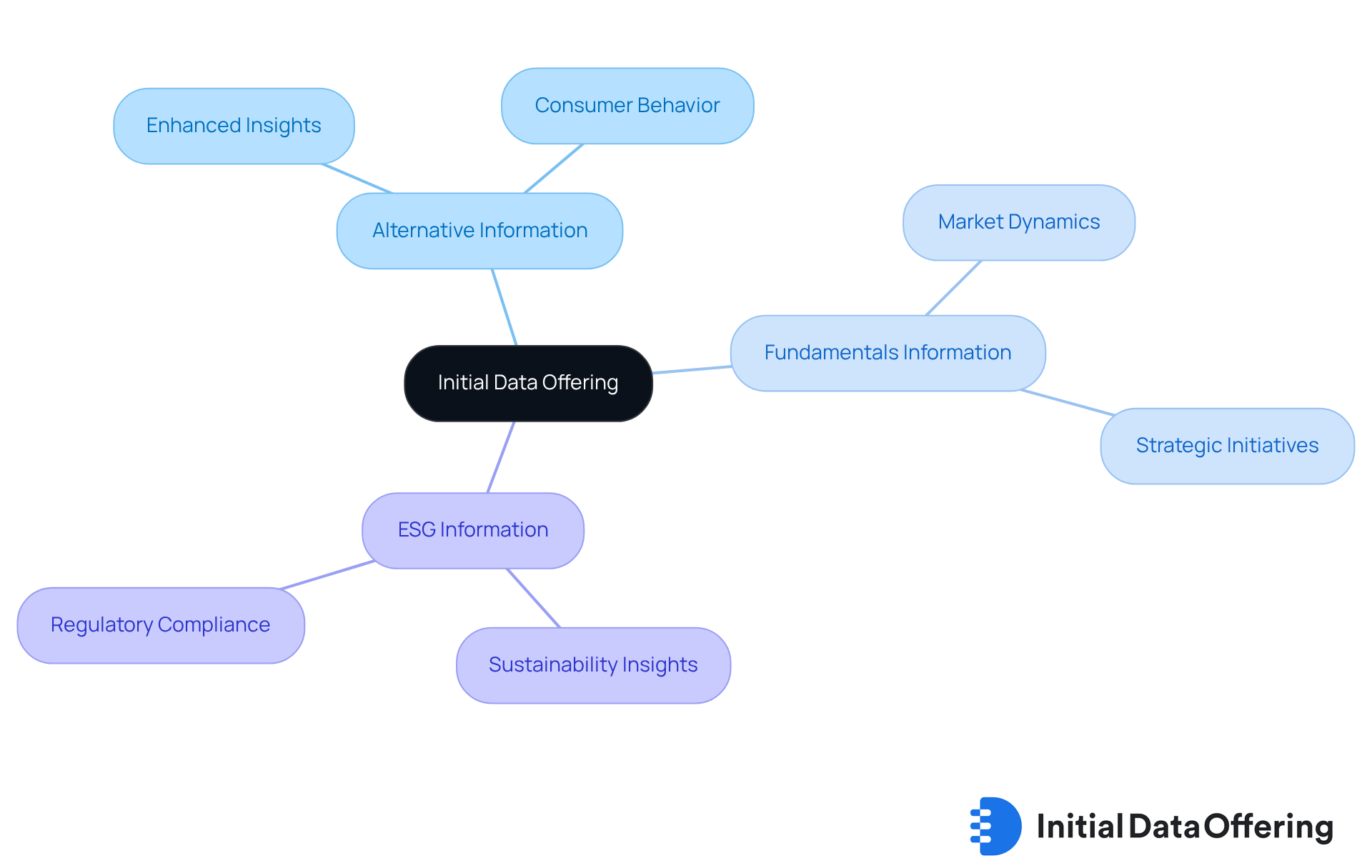
DCSC.ai: Utilize AI-Driven Economic Classification for Targeted Segmentation
DCSC.ai provides an AI-powered dynamic company sector classification that adapts seamlessly to economic shifts. This innovative tool enables businesses to classify their target audience using the most current economic data through technographic segmentation, ensuring that their segmentation strategies remain relevant and timely. By leveraging this method, companies can implement focused marketing initiatives that resonate with specific audience segments, ultimately enhancing engagement and boosting conversion rates.
As the AI market is projected to reach nearly $1.01 trillion by 2031, integrating AI into technographic segmentation strategies is becoming increasingly essential. Notably, 65% of individuals express trust in businesses that utilize AI. Thus, harnessing this technology not only enhances marketing effectiveness but also cultivates client confidence. In this evolving landscape, prioritizing ethical practices and transparency in AI usage is crucial for fostering long-term relationships with clients.
How can your organization leverage these insights to improve its marketing strategies?

Leverage Alternative Data: Gain Unique Insights into Consumer Behavior
Alternative information, such as social media engagement and transaction records, presents unique insights into buyer behavior that conventional datasets often overlook. By integrating this alternative information into their research, companies can identify emerging trends and shifts in buyer preferences.
For instance, analyzing social media sentiment allows companies to understand customer perceptions of their products or services. This understanding enables the development of more tailored marketing strategies that align with customer expectations.
How might your organization leverage these insights to enhance customer engagement and drive sales?

Incorporate ESG Data: Understand Consumer Preferences and Corporate Responsibility
Incorporating Environmental, Social, and Governance (ESG) information into research is crucial for companies seeking to connect with buyer values. As sustainability and corporate responsibility gain prominence, understanding ESG factors can significantly enhance brand loyalty and trust. Companies that openly communicate their ESG initiatives tend to attract buyers who prioritize ethical practices, thereby strengthening their market position.
For instance, Cisco's dedication to obtaining 85% of its electricity from renewable sources, achieved in 2021, not only demonstrates its commitment to sustainability but also aligns with the increasing demand from customers for responsible corporate behavior. Furthermore, experts highlight that younger generations are particularly inclined to support organizations that reflect their values. Carolina M. Veira notes that employees increasingly seek organizations that help them become better citizens and align with their values, emphasizing the need for brands to adopt transparent ESG practices.
In 2025, brands that effectively utilize ESG data are likely to witness enhanced customer loyalty, as individuals increasingly seek to engage with companies that show a true commitment to social and environmental issues. This trend underscores the critical role of corporate responsibility in shaping consumer preferences and driving brand loyalty. Moreover, as McKinsey indicates, ESG allows companies to attain greater strategic freedom and minimize risks, emphasizing the wider benefits of incorporating ESG into corporate strategies.
However, research analysts should also be aware of the challenges associated with ESG investing, such as the lack of standardized metrics and the risks of greenwashing. To effectively utilize ESG information, companies should concentrate on clear reporting and align their initiatives with customer values, ensuring they foster trust and loyalty in an increasingly aware environment.
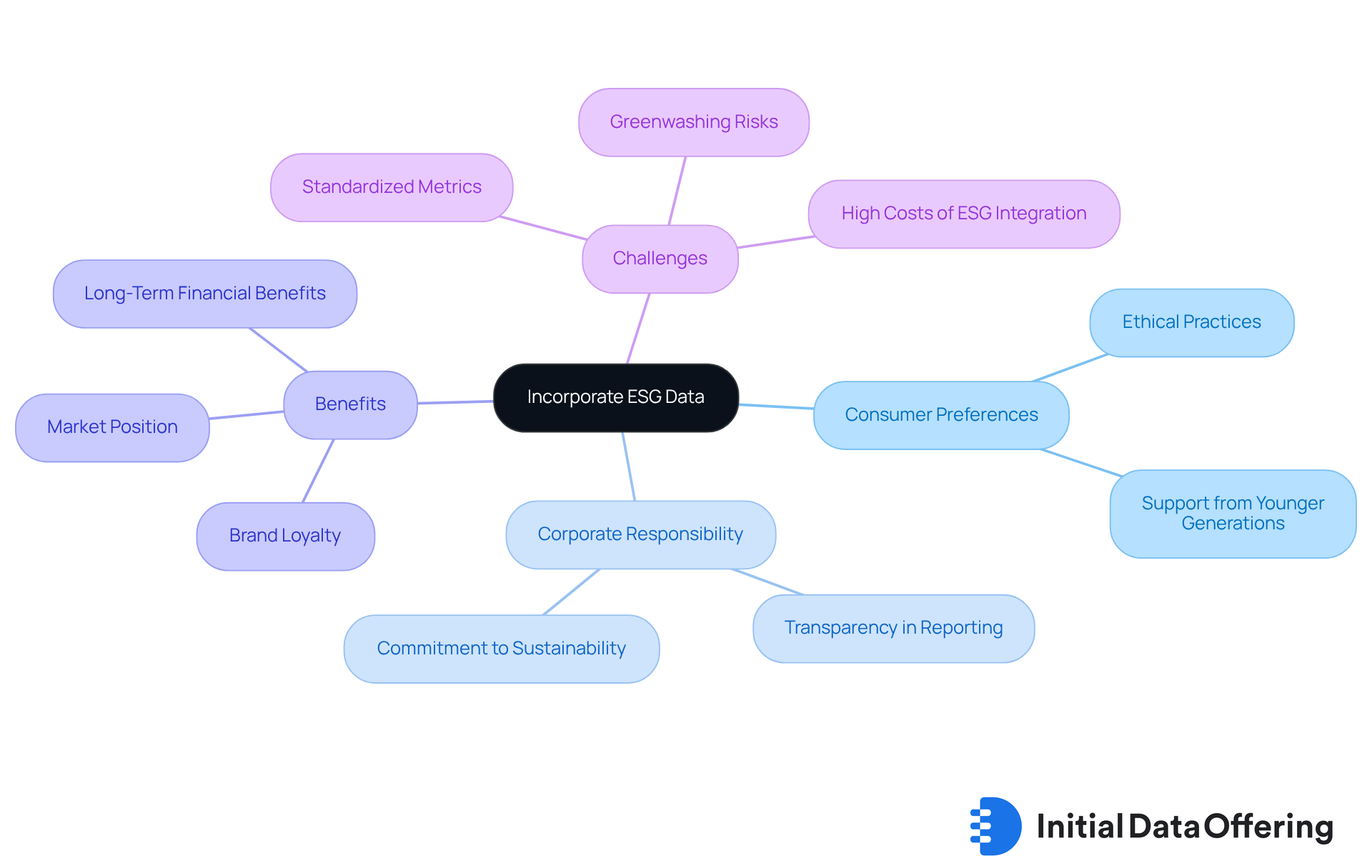
Embrace Real-Time Data Access: Stay Ahead of Market Trends
Adopting real-time data access is essential for organizations aiming to stay competitive in a constantly changing environment. By utilizing advanced tools that provide real-time insights, organizations can quickly adjust their strategies through technographic segmentation to better align with evolving buyer behaviors and market dynamics. For instance, companies utilizing real-time analytics have reported a 63% average reduction in process inefficiencies. This significant improvement enables them to identify and respond to changes in purchasing patterns effectively (source: IDC). Such agility allows companies to fine-tune their marketing efforts, ensuring they resonate with current consumer expectations.
Remarkably, a leading airline that adopted real-time information analysis experienced a 25% decrease in flight delays, greatly boosting customer loyalty (source: case study). Similarly, Starbucks analyzes over 4 billion transactions annually to tailor customer experiences, resulting in a 25% increase in loyalty program engagement (source: case study). These examples illustrate the transformative potential of real-time analytics and technographic segmentation in shaping successful marketing strategies.
How might your organization leverage real-time data to enhance its competitive edge?
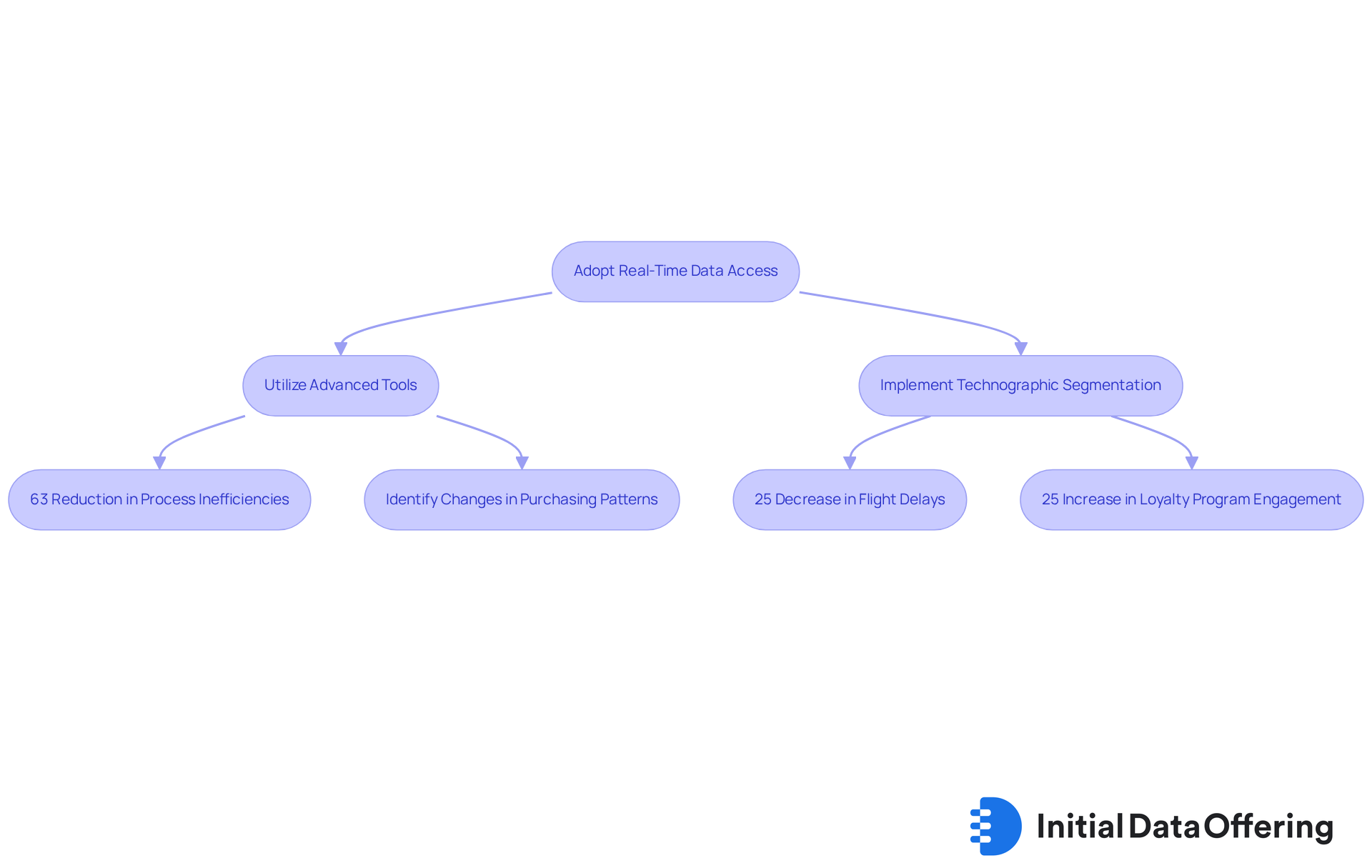
Implement Data Visualization Tools: Simplify Complex Data Interpretation
Employing visualization tools is crucial for simplifying the interpretation of complex datasets. Features of platforms like Tableau and Power BI include the ability to create interactive dashboards that display information clearly and accessibly. The advantages of visualizing trends and patterns enable stakeholders to swiftly pinpoint critical insights, facilitating quicker and more informed decision-making. For instance, organizations utilizing these tools have reported increased clarity in their analysis, resulting in better strategic outcomes. As we look towards 2025, the ability to streamline intricate datasets through effective visualization will be vital for enterprises striving to remain competitive and adaptable to industry dynamics.
The median monthly payment among outstanding mortgages, according to the Federal Housing Finance Agency, is $1,520. This statistic highlights the financial implications of data-driven decisions. Moreover, Sandra L. Thompson, Director, remarked, "The dissemination of refreshed information will enable stakeholders to gain a clearer insight into emerging mortgage and housing market trends." This statement underscores the importance of visualization in interpreting intricate datasets. The introduction of the NMDB Aggregate Statistics Dashboard serves as a case study, demonstrating how visualization tools can enhance public access to mortgage information and improve stakeholder insights.
How can these tools be leveraged in your organization to drive better decision-making?

Foster Community Engagement: Enhance Dataset Quality and Relevance
Fostering community engagement is essential for enhancing the quality and relevance of datasets. Engaging community members in the information-gathering process ensures that the datasets accurately reflect actual conditions and client requirements. This collaborative approach not only improves data precision but also builds trust and credibility among stakeholders. Ultimately, this leads to more effective research outcomes.
Consider how involving community members can transform your datasets. By incorporating their insights, you can create a more comprehensive representation of needs and expectations. This not only enhances the reliability of your data but also empowers stakeholders, fostering a sense of ownership and collaboration. The implications for your research are significant, as this approach can lead to richer insights and more impactful findings.

Utilize Predictive Analytics: Anticipate Market Shifts and Consumer Behavior
Predictive analytics serves as a powerful tool for businesses, enabling them to foresee changes in demand and buyer behavior by leveraging historical data to identify patterns and trends. This analytical approach not only facilitates companies in forecasting future developments but also empowers them to make informed, proactive decisions. For instance, organizations can utilize predictive models to uncover potential business opportunities or risks, allowing for timely adjustments to their strategies and helping them maintain a competitive edge.
As highlighted by industry experts, the capability to analyze large datasets enhances decision-making and refines audience segmentation via technographic segmentation, ultimately leading to improved marketing effectiveness. Companies such as Sephora exemplify successful implementation of AI-powered predictive analytics to personalize customer experiences, showcasing the tangible benefits of this technology in understanding consumer behavior and driving sales outcomes.
Moreover, predictive analytics finds application across various industries, including fraud detection and operational efficiency, underscoring its versatility. By integrating predictive analytics into their operations, companies can navigate the complexities of the business environment with greater agility and insight.
How might your organization leverage predictive analytics to enhance decision-making and strategy formulation?
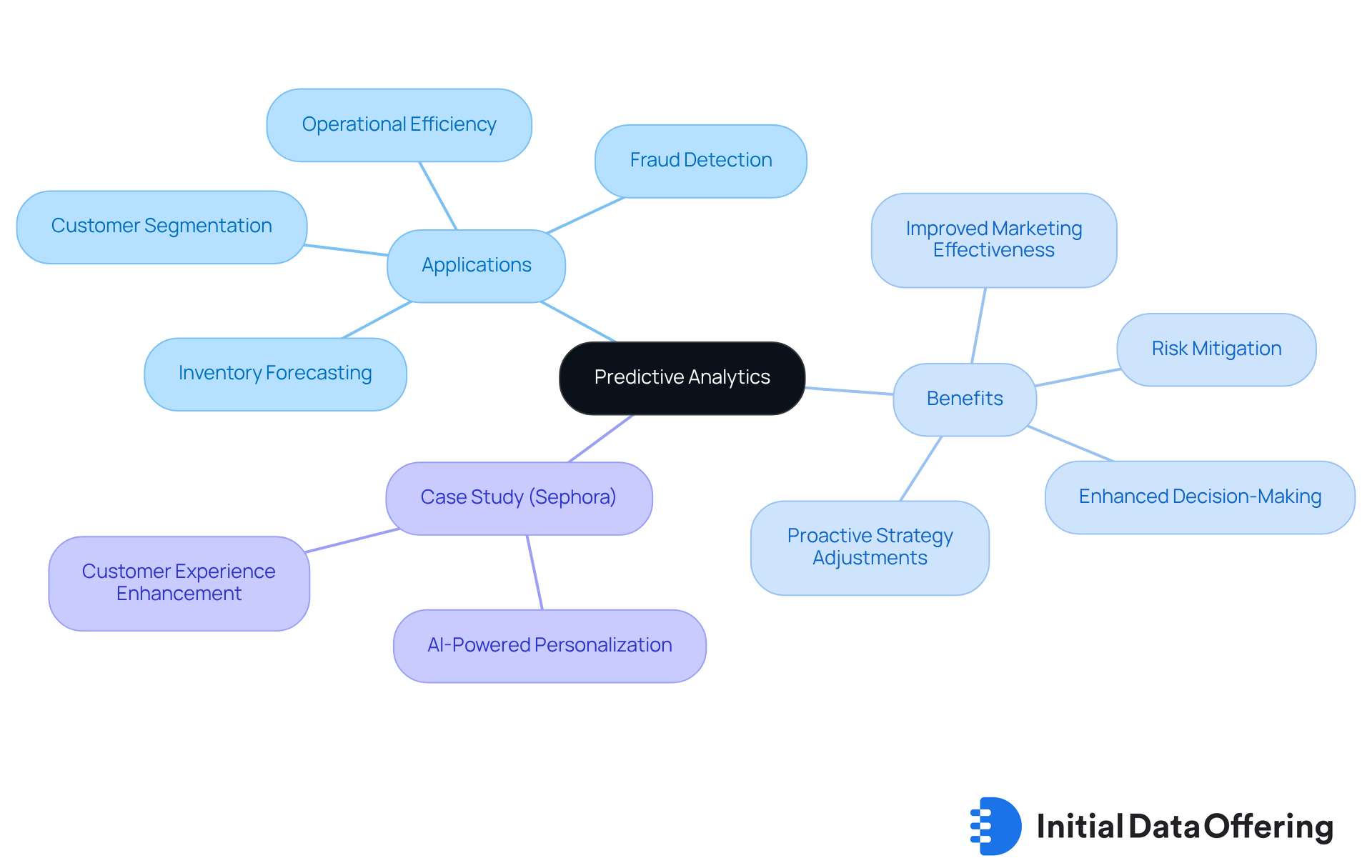
Ensure Data Accuracy and Reliability: Foundation for Effective Market Research
Ensuring the precision and reliability of information is crucial for effective industry research. Businesses must adopt stringent information validation processes to uphold high-quality datasets. By emphasizing information integrity, companies can make informed decisions based on reliable insights. This focus not only enhances audience segmentation through technographic segmentation but also supports strategic planning, ultimately resulting in more effective business outcomes.
How can your organization benefit from prioritizing data integrity in its decision-making processes?
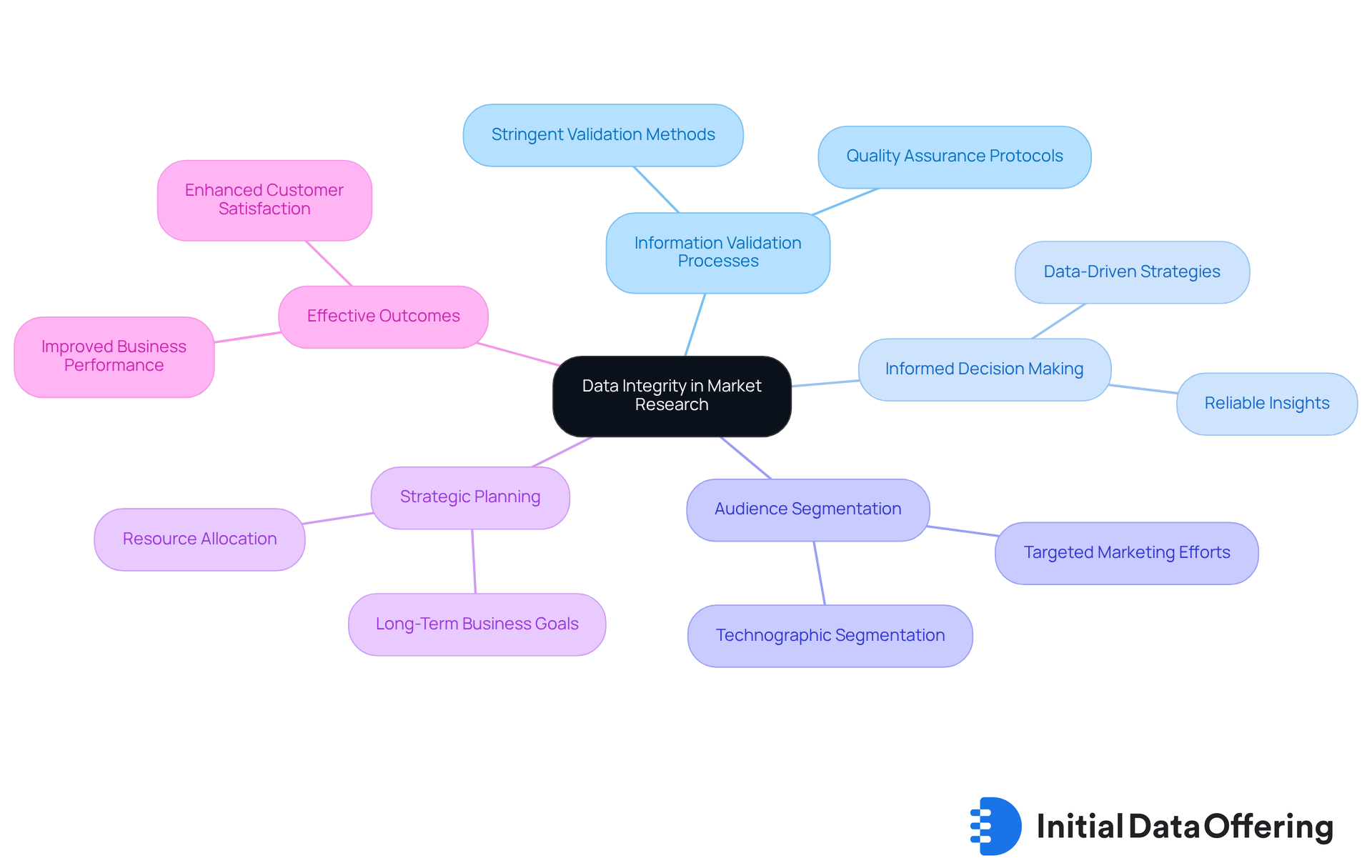
Integrate Multiple Data Sources: Achieve a Comprehensive Market View
Incorporating various information sources is crucial for obtaining a thorough perspective of the industry. By merging information from different sources—such as social media, customer feedback, and industry reports—businesses can gain deeper insights into consumer behavior and industry dynamics. This multi-source approach not only enhances the accuracy of market research findings but also supports more effective strategies for technographic segmentation.
How can your organization leverage these insights to improve decision-making? By utilizing diverse data, companies can better understand market trends and consumer preferences, ultimately driving more informed strategies. The benefits of this approach are clear:
- Improved accuracy in research
- Enhanced segmentation through technographic segmentation
- A more comprehensive view of the market landscape

Conclusion
Implementing effective technographic segmentation strategies is essential for businesses aiming to navigate the complexities of market research successfully. By leveraging diverse datasets, organizations can gain a nuanced understanding of consumer behavior and market dynamics, allowing them to tailor their marketing initiatives to meet the specific needs of their target audiences.
Key insights from the article highlight the importance of utilizing advanced tools such as:
- AI-driven economic classification
- Alternative data sources
- Real-time analytics
These strategies enhance the accuracy and relevance of market research while empowering companies to foster deeper connections with consumers by aligning their offerings with evolving preferences. Furthermore, incorporating ESG data and community engagement can significantly bolster brand loyalty and trust, essential components in today’s ethical marketplace.
As the landscape of market research continues to evolve, organizations are encouraged to embrace these innovative strategies. By prioritizing data accuracy, integrating multiple data sources, and utilizing predictive analytics, businesses can stay ahead of market trends and make informed decisions that drive long-term success. The future of market research lies in the ability to adapt and respond to consumer needs, making technographic segmentation a critical tool for any forward-thinking organization.
Frequently Asked Questions
What is the Initial Data Offering (IDO)?
The Initial Data Offering (IDO) is a centralized hub that provides access to a diverse range of datasets, including alternative information, fundamentals information, and ESG information, enabling companies to gain comprehensive insights into industry dynamics and buyer preferences.
How does the IDO improve market insights?
The IDO enhances market insights through SavvyIQ's API-first information infrastructure and the AI-driven Recursive Data Engine, which uncover hidden consumer behaviors that traditional datasets may overlook, thus improving the overall quality of market insights.
What benefits do organizations gain from using the IDO?
Organizations can enhance their understanding of the market landscape and position themselves strategically to meet evolving consumer needs by leveraging the insights provided by the IDO.
What is DCSC.ai and how does it function?
DCSC.ai is an AI-powered dynamic company sector classification tool that adapts to economic shifts, allowing businesses to classify their target audience using the most current economic data through technographic segmentation.
Why is integrating AI into segmentation strategies important?
Integrating AI into segmentation strategies is essential as it enhances marketing effectiveness, cultivates client confidence, and ensures that segmentation strategies remain relevant and timely, especially as the AI market is projected to grow significantly.
What role does alternative data play in understanding consumer behavior?
Alternative data, such as social media engagement and transaction records, provides unique insights into buyer behavior that conventional datasets often miss, helping companies identify emerging trends and shifts in buyer preferences.
How can companies utilize insights from alternative data?
Companies can analyze alternative data, like social media sentiment, to understand customer perceptions of their products or services, enabling them to develop more tailored marketing strategies that align with customer expectations.